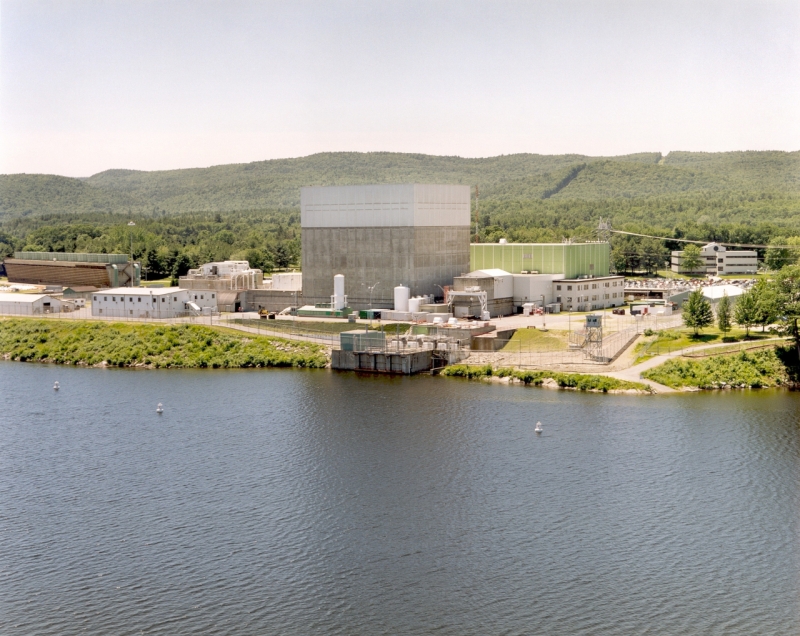
Vermont Yankee (VY) is the only nuclear reactor in the state of Vermont and the second oldest in the country. While President Obama has committed his administration’s energy agenda to galvanizing a nuclear energy renaissance, on February 24, 2010 the Vermont Senate decided, twenty-six to four, in favor of concluding VY operations.[i] Unless the Senate overturns its decision and the House approves an extension, VY must close by March 2012.
During the years leading up to the vote on relicensing VY, multiple issues surfaced leading to decreased confidence in VY by Vermont residents and legislators. Notable controversies surrounding VY include: ambiguous testimony from plant executives, the collapse of a cooling tower, security problems, and a tritium leak. During August of 2007, a three-story cooling tower on the western side of the plant gave way, releasing some cooling water.[ii] Likewise, in 2008, Vermont Yankee issued a public statement asserting there was a security breach, but a full account of the security issue could not be rendered due to security concerns. The first two events, while serious, were forgiven and did not draw nearly as much attention as what occurred during a standard committee hearing regarding the station.
Plant executives testified under oath to two state panels that there were no underground pipes at VY that could leak Tritium when, in fact, there were. Entergy, the owners of VY, then informed Vermont legislative officials and state authorities there were in fact pipes, though they claimed the pipes did not carry any sort of “irradiated water.” Measurements of residual water found in a pit sump, a storage tank that collects water from the plant, indicated otherwise as the level of tritium was at 19,800 picocuries per liter, just two hundred shy of the federal Environmental Protection Agency’s mandated maximum of 20,000 picocuries per liter. [iii] Tritium is a radiation hazard when ingested, inhaled, or if it is able to permeate the skin.[iv] The effects of Tritium are not something Vermonters should take light heartedly, but the consequences of a person’s exposure to Tritium have been greatly exaggerated by the media.
As a result, the majority of Vermont residents and legislators have lost confidence in the Vermont Yankee plant. However, the decision to decommission and end VY activities by 2012 is fiscally and economically irresponsible. An extension of VY’s operations past 2012 is imperative for the protection of Vermont’s future. VY has been a source of economic stimulation in southeastern Vermont for thirty-eight years. In a report by Richard Heaps, in 2009 VY employed 670 employees, had a payroll of $68 million, created 1,288 jobs, a payroll of $93.3 million, and raised disposable incomes by $78.5 million.[v] When the rest of the state, and country for that matter, was hit with staggering unemployment rates and closing businesses, VY stood strong and acted as an anchor for Vermont’s economy, preserving the jobs of all employees. As one of the state’s largest employers, it speaks well of the institution and demonstrates its worth to the Vermont economy and community. VY paid $4.94 million in Education Fund taxes in 2008, out of the total of $1.3 billion received by the entire state.[vi] The $4.94 million in revenues received from the VY station were enough to cover the entire cost of educating 352 Vermont students in 2009. v
VY saves Vermont hundreds of millions of dollars, charging 6.1 cents per Kilowatt per hour. From 2002 to 2009, these savings have exceeded $300 million.v It is estimated that for every $10 million saved from lower electricity costs by Vermont households, 64 more jobs are created throughout Vermont with a payroll of $2.4 million in 2009.v Entergy-VY Spokesperson Larry Smith stated VY provides a two billion dollar benefit to Windham County and provides $16 million to the state of Vermont annually. The state has a $170 million deficit, and VY provides a grand total of $100 million to the Vermont economy.
If Vermont Yankee operations are not extended, reports show that within twenty years there would be a consistent average of 1,232 unemployed individuals in Windham County and 342 unemployed individuals in the state.v Over the same period of time, estimates show that Windham County would see a departure of 600 people due entirely to the closure of the plant. Dr. Howard Axelrod, an independent energy consultant, said Vermont would lose a total of $313 million in tax revenues over the thirty-eight years between 2012 and 2050 if the VY Station is shut down.[vii] Further, over the course of forty years, it is estimated that Vermont will see a total revenue decrease of $92 million.vii Statewide average retail electric prices are estimated to increase by 19% to 39%, and without Vermont Yankee’s power, carbon dioxide emissions, from all sources statewide, would likely increase by two million tons annually, an increase of ten thousand percent.vii The potential costs to Vermonters stemming from the need for pollution allowances could exceed $60 million annually for carbon dioxide and $3 million for nitric oxide.vii These costs would be in addition to the increase in retail price of energy.
Vermont must act because while VY’s issues are indefensible and careless, they are also amendable. Vermont’s current alternative energy portfolio is limited. It currently provides few other sources or plans for the immediate, affordable renewable energy resource needed to replace one-third of the state’s electricity. The closure of VY, without an acceptable substitute, will initiate higher taxes for the residents of Vermont.
The best option for the state is to extend VY operations thereby ensuring one-third of the state’s electricity and eliminating the threat of increased energy bills. Jobs will be preserved at the plant, and it will provide an incentive for individuals to pursue occupations in the renewable energy field as Vermont plans for the future. An extension would give VY the opportunity to improve and repair its trust problems with Vermont residents, as well as give the state of Vermont the necessary amount of time to develop alternative energy programs.
As a resident of Vermont, it would be an understatement to say that the recent behavior of the plant is unsettling. However, Vermont legislators have acted rashly and have allowed re-election anxieties to temper good judgment. It will be much more beneficial to improve what needs to be fixed, than to shut it down entirely. State officials and legislators need to do what is economically sound for the people of Vermont, and that is to grant VY a certificate of public good to extend its operations, giving Vermont more time to formulate and re-articulate a well-founded, long-term plan.
[i] Wald, Matthew. “Vermont Senate Votes to Close Nuclear Plant.” 24 Feb. 2010. Web. http://www.nytimes.com/2010/02/25/us/25nuke.html.
[ii] “A Summary of Issues Surrounding Vermont Yankee.” Entergy Vermont Yankee Issues Document (6 Mar. 2009). Safe, Clean and Reliable. 6 Mar. 2009. Web. http://www.safecleanreliable.com.
[iii] Audette, Bob. “Tritium Leak Found at VY – Brattleboro Reformer.” Home – Brattleboro Reformer. 8 Jan. 2010. Web. 07 Nov. 2010. http://www.reformer.com/localnews/ci_14146170.
[iv] Osborne, R. V. “Tritium Hazard Report: Pollution and Radiation Risk from Canadian Nuclear Facilities.” 13 Aug. 2007. Web. 26 Jan. 2011. Tritium Hazard Report: Pollution and Radiation Risk from Canadian Nuclear Facilities.
[v] Heaps, Richard. “The Economic Impact of the VY Station on Windham County and Vermont.” Vermont Economy Newsletter (15 Feb. 2008). Print.
[vi] Heaps Richard. “The Economic Impact of the VY Station on Windham County and Vermont.” Vermont Economy Newsletter (15 Feb. 2008). Print.
[vii] “A Summary of Issues Surrounding Vermont Yankee.” Entergy Vermont Yankee Issues Document (6 Mar. 2009). Safe, Clean and Reliable. 6 Mar. 2009. Web. 27 May 2010. http://www.safecleanreliable.com.



